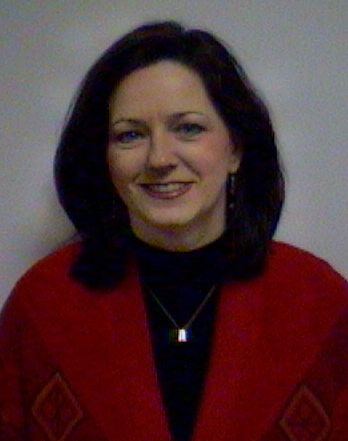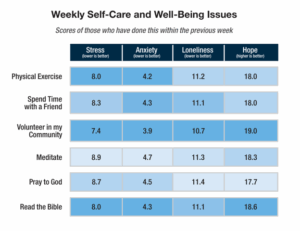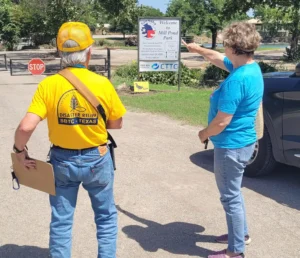
ST. PETERSBURG, Fla. (BP)–After voters in five of seven states approved relaxing drug laws in the November elections, the director of the Drug Free America Foundation warns similar efforts are coming elsewhere, fueled largely by a billionaire financier.
Calvina Fay believes pro-drug forces will push drives for medical marijuana in 2002 in Michigan, Florida and Ohio, along with a second attempt to legalize marijuana in Alaska.
She also looks for an additional initiative in Maine, which adopted medicinal marijuana in 1999. Advocates raised more than $574,000 in passing that ballot initiative. Afterwards, they reported collecting an additional $56,000, which Fay called a signal of another move. “We just don’t know what yet,” she said.
Citizen groups that opposed medical marijuana and other attempts to sanction drug use in the latest election were heavily outspent, she said, a factor that will likely continue.
“They’re killing us financially,” she said. “There’s no way we can compete. The money is definitely a factor.”
Billionaire financier George Soros and cohorts John Sperling and Peter Lewis are the financial backbone of the drug legalization movement. The trio poured more than $20 million into state referendums during the 1990s, according to a 1998 report in Reader’s Digest. Joseph Califano, former U.S. secretary of health, education and welfare, labeled Soros the “Daddy Warbucks of drug legalization.”
The Drug Policy Foundation, a group formed by Soros, boasts that 17 of 19 drug referendums have passed since 1996.
Director Ethan Nadelmann, Soros’ key spokesman on drug policy, previously told Reader’s Digest that he wants to legalize personal possession of drugs by adult Americans. (Several attempts to reach Nadelmann for further comment were unsuccessful.)
Soros has maintained he is not in favor of legalizing hard drugs.
“I am for a saner drug policy,” he wrote in a 1997 Washington Post article. “I firmly believe that the war on drugs is doing more harm to our society than drug abuse itself.
“I believe that a drug-free America is a utopian dream. Some form of drug addiction or substance abuse is endemic in most societies. Insisting on the total eradication of drug use can only lead to failure and disappointment.”
And, according to pre-election reports filed with two states, he continues to financially support those beliefs.
Secretaries of state in California and Arizona reported Soros, Sperling and Lewis spent nearly $3.3 million backing referendums this fall. That represented 96 and 99 percent, respectively, of the money raised for those efforts.
Fay said the Drug Free America Foundation has long been concerned about the money pouring into these initiatives, and Soros has enough money to press for passage of any social reform he favors.
“If you ignore the drug issue and look at public policy issues, this is a dangerous precedent,” she said. “Anyone with enough money can buy a public policy and say anything they want to in the ads. The public doesn’t know any different and votes on misinformation.”
Such efforts are creating a dangerous trend, she said. For example, while medicinal marijuana attracted a lot of press coverage, the anti-drug spokeswoman said there are other moves to legalize all drugs.
California approved treatment instead of jail for low-level offenders, while two other states overhauled drug forfeiture laws: Oregon approved putting those funds into a new drug treatment fund instead of law enforcement, while Utah will put the proceeds into a public education fund.
“That on the surface doesn’t sound bad, but it’s very disturbing to us,” Fay said. “People don’t realize what asset forfeiture funds are used for. You’re talking about a major crippling of law enforcement.”
In addition, California hasn’t defined treatment, meaning some “fly-by-night” programs may flourish, including ones that provide clean needles to addicts or believe in maintaining users on their drug of choice, she said.
Drug advocates have cleverly seized on Americans’ compassion to give their arguments respectability, said Barrett Duke, vice president of research for the Southern Baptist Ethics & Religious Liberty Commission.
While he understands the public wanting to provide relief to those suffering from chronic pain, Duke said turning to marijuana as a solution is too high a price to pay.
There are too many potential negatives, he said, with respiratory problems and mental disorientation among the harmful consequences. “It’s not typical pain relief, it’s a mind-altering drug,” he said. “It has effects going way beyond pain relief.”
And the active ingredient in marijuana is already available in pill form — whose leading trade name is Marinol — and has been prescribed by doctors for years, Duke said.
Nor are a majority of pain sufferers terminally ill, Duke said. By using marijuana (which has more carcinogens than tobacco), such patients may be introducing a substance that will damage their life, he added.
“They are playing on people’s sympathy, like education and economic development,” he said. “Drug forces are playing on medical marijuana, recreational use and the exploding prison population.
“It’s similar to gambling. They flood a state with money and PR firms and turn out their vote. They win because they spend a lot of money. They are heard from in disproportionate numbers, compared to their size. Practically everyone in authority opposes legalizing drugs. You have to look long and hard to find any district attorney in favor of it.”
Although saying she often feels like she is swimming upstream in the battle against drugs, Fay said sometimes conditions must grow worse in order to arouse public concern.
“Back in the 1970s parents woke up to their children using drugs,” she said. “That’s what invigorated the movement, leading to declaring war on drugs, getting employers to have drug-free workplaces and parents to work with their children. We tend to get complacent when the problem isn’t visible.”
She recommended citizens band together to address the situation, in such ways as:
— Forming e-mail groups. If one person notifies 10 people, who in turn each notify 10 more, education and awareness can spread, she said.
— Speaking out. When others spread the myth of marijuana as medicine, counter those claims, she said.
— Contact state legislators and congressional representatives to voice your opinion, “I guarantee the other side will,” Fay noted.
— Financial support. The best way to reach the American people is through television and other media, which is expensive, she said.
— Contact news media to encourage them to report responsibly on drug issues. Too often the truth gets buried behind misleading headlines, she said.
The Internet site of the Drug Free America Foundation is www.dfaf.org; the telephone number is (727) 893-2616.
“I think if people are properly educated, they won’t get sucked into these initiatives,” Fay said. “We don’t have enough money to create an information campaign to counter the misinformation campaigns.”
–30–
(BP) photo posted in the BP Photo Library at www.bpnews.net. Photo title: CALVINA FAY.




















